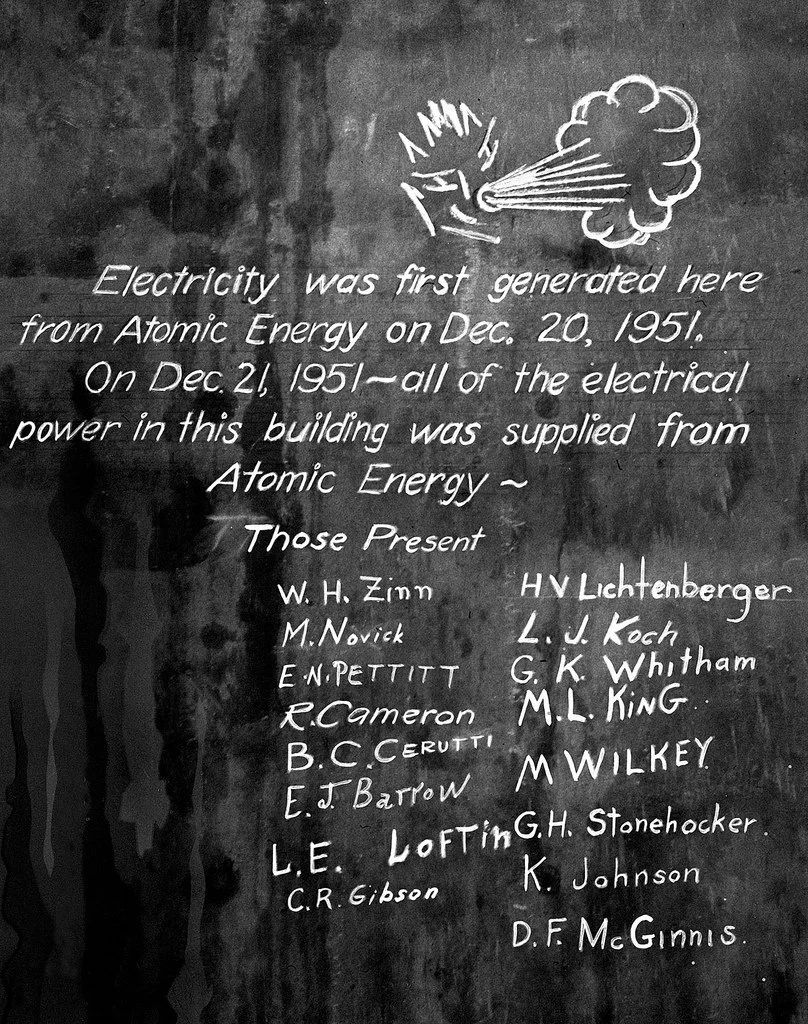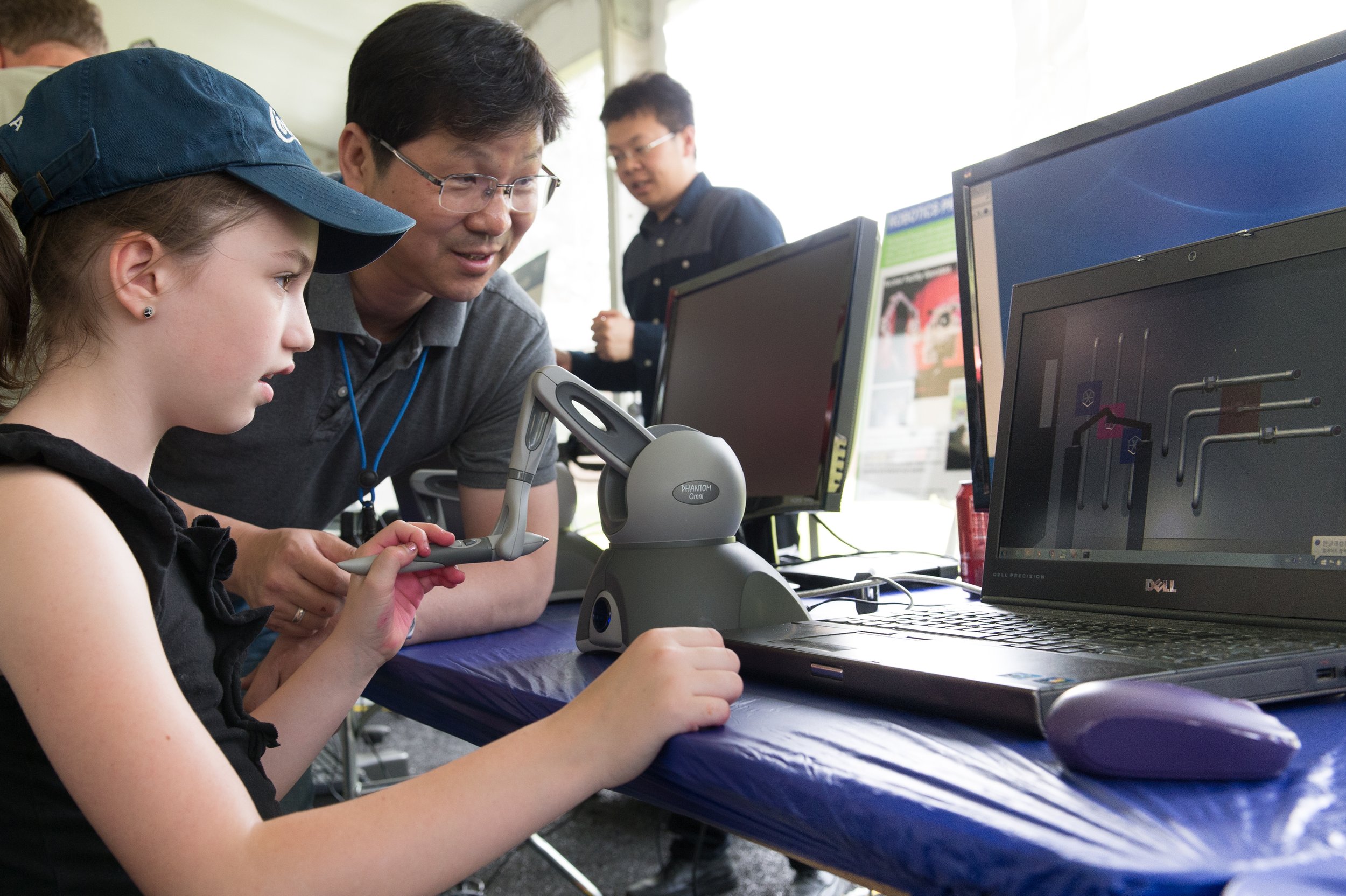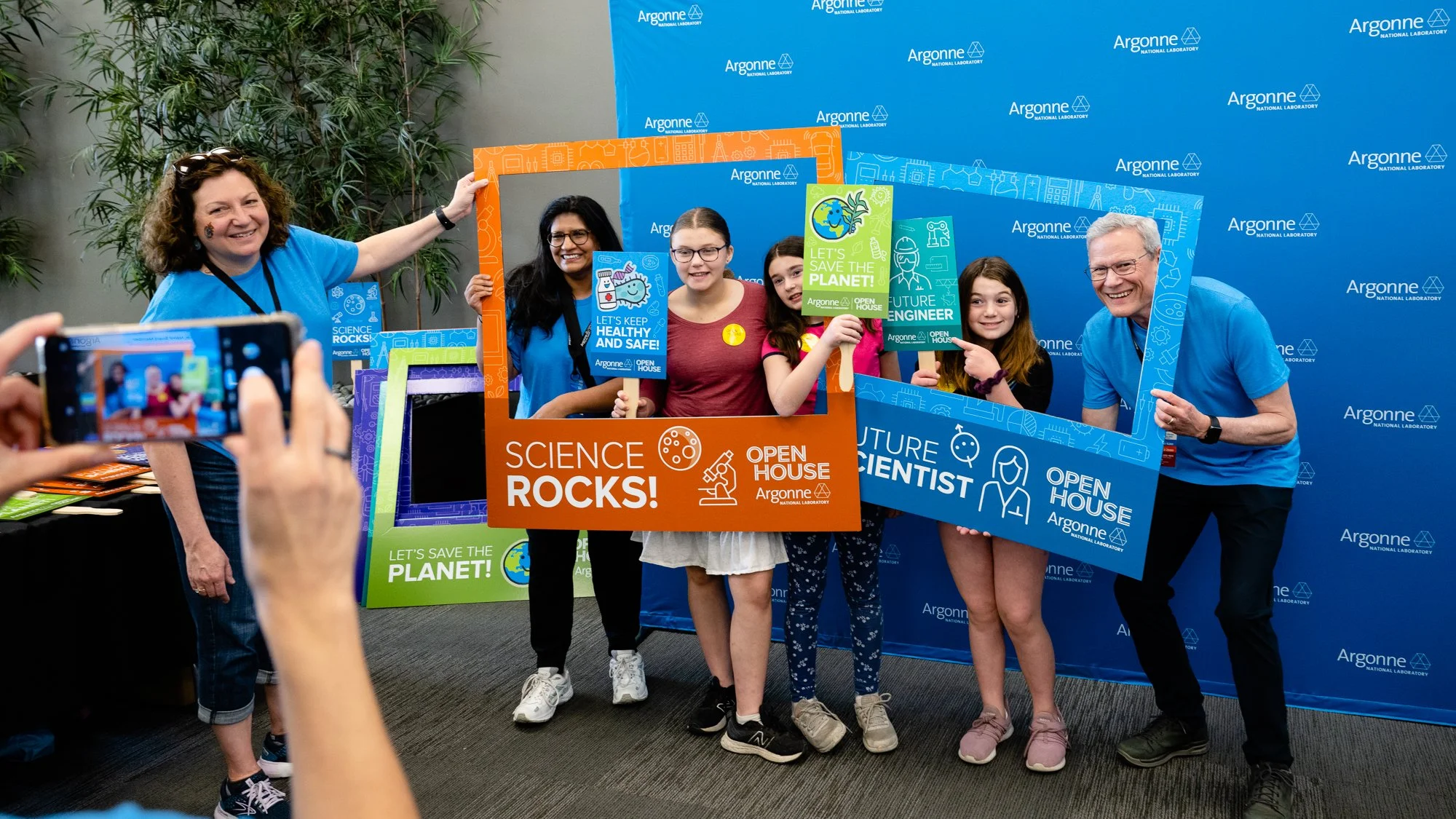Argonne National Laboratory: A Scientific Beacon in Lemont, Illinois
Aerial of Argonne National Laboratory (Photo from Argonne National Laboratory)
Nestled in the southwestern suburbs of Chicago, just outside the Village of Lemont, Illinois, sits one of America's most prestigious scientific institutions: Argonne National Laboratory. This 1,500-acre campus has been at the forefront of scientific discovery for over eight decades, transforming from a wartime nuclear research facility into a world-renowned center for multidisciplinary science and engineering.
Deep Roots in Local History
The story of Argonne begins in 1942, during the height of World War II, when the University of Chicago established the Metallurgical Laboratory as part of the Manhattan Project. The laboratory was initially housed in makeshift facilities throughout Chicago, including the famous squash court beneath Stagg Field, where Enrico Fermi achieved the first controlled nuclear chain reaction on December 2, 1942. You may have heard this story in the Oscar-winning film, Oppenheimer.
As the war progressed, the need for a more secure and spacious facility became apparent. In 1943, the laboratory moved to a 1,000-acre site in the Argonne Forest Preserve, about 25 miles southwest of Chicago. The location was chosen for its proximity to the University of Chicago, its relative isolation for safety purposes, and its connection to the existing infrastructure of the Chicago area.
Did you know? The name "Argonne" itself carries historical significance, honoring the American soldiers who fought in the Battle of the Argonne Forest during World War I. This connection to military history seemed fitting for a facility that would play a crucial role in America's wartime scientific efforts. That original facility? It was located in what is now Red Gate Woods—a forest preserve just outside Chicago that once housed part of the Manhattan Project. If you ever want to visit the site where nuclear history was made, head over!
Learn more about Red Gate Woods
————————————————————————————————————————
The laboratory's presence transformed the surrounding area, which had previously been primarily agricultural land dotted with small communities. Lemont, incorporated in 1873, had been a quiet canal town along the Illinois & Michigan Canal. During World War II, Lemont played a key role in the war effort—not only through its proximity to the Manhattan Project, but also as the home of the Joliet Army Ammunition Plant, where thousands of workers supported the production of munitions.
The arrival of Argonne brought an influx of scientists, engineers, and support staff, gradually changing the character of the region from rural to suburban while maintaining its connection to the natural landscape.
Pioneering Projects and Scientific Breakthroughs
Throughout its history, Argonne has been responsible for numerous groundbreaking discoveries and technological innovations that have shaped modern science and society.
Nuclear Energy and Reactor Development
This drawing depicts the historic event on December 2, 1942, when a group of 49 scientists led by Enrico Fermi created the world’s first controlled, self-sustaining nuclear chain reaction. (Image copyright Chicago Historical Society)
In its early years, Argonne was primarily focused on nuclear research. The laboratory designed and built the first nuclear reactors for both research and power generation. The Experimental Breeder Reactor-I (EBR-I), though located in Idaho, was designed at Argonne and became the first reactor to generate electricity from nuclear energy in 1951.
The laboratory also developed the boiling water reactor design, which became one of the most widely used nuclear power plant designs in the world. Argonne's work in nuclear safety and reactor physics helped establish the foundation for the civilian nuclear power industry.
Materials Science and Battery Technology
Argonne has been at the forefront of materials science research, particularly in developing advanced battery technologies. The laboratory's work on lithium-ion batteries has been instrumental in the development of everything from cell phones to electric vehicles. Argonne scientists have created cathode materials that have improved battery performance, safety, and longevity.
The laboratory's Joint Center for Energy Storage Research (JCESR) continues to push the boundaries of energy storage technology, working on next-generation batteries that could revolutionize how we store and use energy.
Supercomputing and Data Science
AVIDAC, Argonne's first digital computer, began operation in January 1953. It was built by the Physics Division for $250,000. Pictured is pioneer Argonne computer scientist Jean F. Hall. AVIDAC stands for "Argonne Version of the Institute's Digital Automatic Computer" and was based on the IAS architecture developed by John von Neumann. (Photo from Argonne National Laboratory)
Argonne is home to some of the world's most powerful supercomputers. The laboratory's Leadership Computing Facility houses systems like Aurora, an exascale supercomputer capable of performing more than a quintillion calculations per second. These computational resources support research in climate modeling, drug discovery, materials design, and fundamental physics.
Environmental Science and Climate Research
The laboratory has made significant contributions to environmental science and climate research. Argonne scientists have developed advanced climate models, studied the environmental impacts of energy technologies, and worked on solutions for environmental remediation. The laboratory's work on carbon capture and storage technologies is helping address climate change challenges.
Particle Physics and Fundamental Research
Those present at the world's first generation of a useable amount of electricity from nuclear power commemorated the event in chalk on the concrete wall at Experimental Breeder Reactor 1. (Photo from Argonne National Laboratory)
Argonne has been involved in numerous particle physics experiments, including work at Fermilab and international collaborations. The laboratory's Advanced Photon Source, a powerful X-ray facility, allows researchers to study materials at the atomic level, contributing to advances in medicine, technology, and basic science.
Advanced Research Facilities
Albert Crewe (right), Argonne director from 1961 to 1967, explains the ZGS’s Cockroft-Walton pre-accelerator. (Image source from Argonne National Laboratory)
Today, Argonne houses several world-class research facilities that attract scientists from around the globe:
Advanced Photon Source (APS): One of the world's most brilliant X-ray sources, the APS enables researchers to study materials with unprecedented detail. The facility is currently undergoing a major upgrade that will increase its brightness by up to 500 times.
Argonne Tandem Linac Accelerator System (ATLAS): A particle accelerator used for nuclear physics research, allowing scientists to study the properties of atomic nuclei and nuclear reactions.
Center for Nanoscale Materials: A facility dedicated to nanoscience research, providing tools and expertise for studying and manipulating matter at the nanoscale.
Argonne Leadership Computing Facility: Home to some of the world's most powerful supercomputers, supporting computational research across multiple disciplines.
Community Impact and Regional Development
Paul Dabbar, Under Secretary, Office of Science, Department of Energy. (Photo from Argonne National Laboratory)
Argonne's presence has had a profound impact on the Chicago metropolitan area and Illinois as a whole. The laboratory employs approximately 3,400 people, making it one of the largest employers in the region. Many of these employees are highly skilled scientists and engineers, contributing to the area's reputation as a hub for scientific and technological innovation.
The laboratory's economic impact extends far beyond its direct employment. Argonne works closely with industry partners, startups, and academic institutions, fostering innovation and entrepreneurship in the region. The laboratory’s technology transfer program has led to the creation of numerous spin-off companies and the commercialization of technologies developed at Argonne.
Argonne’s partnership with the University of Chicago remains strong, with joint research programs and shared faculty appointments. The laboratory also collaborates with other regional institutions, including Northwestern University, the University of Illinois, and Illinois Institute of Technology.
In 2023, Argonne released a detailed Economic Impact Report, highlighting its $1.6 billion annual impact on the Illinois economy. The report also noted the lab’s role in supporting jobs statewide—demonstrating how its scientific mission continues to fuel economic growth across the region.
Visiting Argonne: Tours and Public Engagement
Visitors to the Advanced Photon Source don 3-D glasses for a presentation on modeling and printing. (Photo from Argonne National Laboratory)
Argonne National Laboratory recognizes the importance of public engagement and offers several opportunities for visitors to learn about its work and history. If you’re spending time in Lemont Downtown, it’s worth looking to see if any tours will be happening soon.
Public Tours
Argonne offers guided public tours that provide visitors with an inside look at the laboratory's facilities and research. These tours typically include:
A visit to the Advanced Photon Source, where guides explain how X-rays are used to study materials
A tour of the Argonne Information Center, which features exhibits on the laboratory's history and current research
An overview of the laboratory's energy research programs
A glimpse into the world of supercomputing
Tour Schedule: Public tours are typically offered on select weekdays and require advance registration. Tours are free, but space is limited, so early booking is recommended.
Requirements: All visitors must be U.S. citizens or permanent residents and must register in advance. Valid photo identification is required for all visitors over 18. The laboratory conducts background checks for all tour participants.
Educational Programs
A young girl at Argonne’s Open House operates Phantom Omni. (Photo from Argonne National Laboratory)
Argonne offers various educational programs for students and teachers:
Student Programs: The laboratory hosts undergraduate and graduate student research programs, providing hands-on experience in cutting-edge research. These programs are typically offered during the summer months.
Teacher Workshops: Argonne conducts professional development workshops for educators, helping them incorporate current scientific research into their curricula.
Science Education Programs: The laboratory partners with local schools to provide science education resources and opportunities for students to engage with working scientists.
Special Events
Throughout the year, Argonne hosts special events that are open to the public:
Argonne Open House: Occasionally, the laboratory hosts open house events that allow for more extensive public access to facilities and interactions with researchers.
Lecture Series: Argonne regularly hosts public lectures by leading scientists on topics ranging from climate change to particle physics.
Science Cafés: Informal gatherings where the public can meet with Argonne scientists over coffee and discuss current research in a relaxed setting.
Planning Your Visit
2023 Open House (Photo from Argonne National Laboratory)
Location and Accessibility
Argonne National Laboratory is located at 9700 South Cass Avenue, Lemont, IL 60439. The facility is easily accessible by car and is approximately 25 miles southwest of downtown Chicago.
By Car: The laboratory is accessible via Interstate 55 and Route 83. Parking is available on-site for visitors.
By Public Transportation: While public transportation options are limited, Argonne does provide some shuttle services for special events. Check upcoming public events to determine if the Metra would be a good idea from Chicago to Lemont.
Booking Information
To schedule a tour or participate in educational programs:
Visit the Argonne National Laboratory website
Call the Public Affairs office
Register well in advance, as tours fill up quickly
Be prepared to provide personal information for security clearance
Looking to the Future
As Argonne approaches its centennial, the laboratory continues to evolve and adapt to meet new scientific challenges. Current research focuses on critical areas such as climate change, energy storage, artificial intelligence, and quantum computing.
The laboratory's strategic plan emphasizes the importance of tackling society's most pressing challenges through scientific innovation. This includes developing clean energy technologies, advancing our understanding of climate systems, and creating new materials and technologies that can improve quality of life.
Argonne's commitment to public engagement and education ensures that its work remains connected to the communities it serves. The laboratory continues to be a source of pride for the Illinois region and a symbol of American scientific leadership.
A Testament to Curiosity
Photo from Argonne National Laboratory)
Argonne National Laboratory stands as a testament to the power of scientific research and its ability to transform both our understanding of the world and the communities in which research takes place. From its origins as a wartime nuclear research facility to its current status as a multidisciplinary research institution, Argonne has consistently pushed the boundaries of human knowledge.
For visitors to the Chicago area, a tour of Argonne provides a unique opportunity to see world-class science in action and to understand how research conducted in the quiet suburbs of Illinois contributes to global scientific progress. Whether you're a student interested in science careers, an educator looking for inspiration, or simply someone curious about how scientific discoveries are made, Argonne National Laboratory offers a window into the fascinating world of modern scientific research.
The laboratory's doors are open to those who seek to understand not just what scientists do, but why their work matters for our collective future. In a world facing complex challenges from climate change to energy security, institutions like Argonne remind us that through dedication, curiosity, and collaboration, we can continue to push the boundaries of what's possible.











